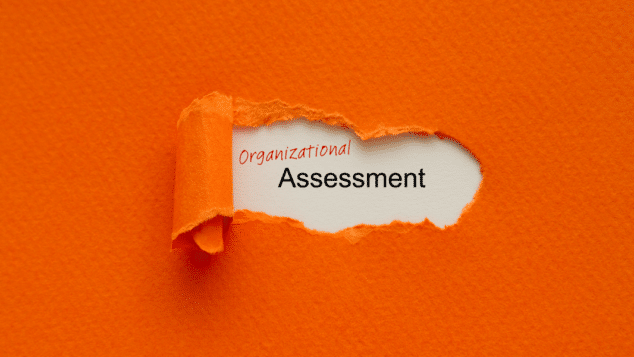Undoing Bias: Unconscious Bias Training for the Workplace

In the wake of protests and civil unrest due to recurring violence and systemic racism toward Black Americans, many organizations have taken measures to cultivate a diverse, equitable and inclusive environment for employees, members and customers. Unconscious bias training is typically part of these measures, and a growing number of companies and organizations are utilizing this training to ensure that they provide a welcoming, safe and inclusive setting for all.
While many people acknowledge the value of unconscious bias training, some opponents feel it won’t put an end to prejudice and discrimination in the workplace. Those who oppose unconscious bias training cite that there is no evidence that this type of training works or that it reduces prejudice within the workplace. In England, for instance, civil servants are no longer required to take part in unconscious bias training, as ministers believe it is ineffective.
Still, there are many who support this training and see it as a way to combat a toxic, abusive and bigoted office environment. With the right approach and training, your organization can benefit from unconscious bias training.
Bias Awareness
Unconscious bias, also called implicit bias, refers to biases an individual is unaware they hold. According to the article “Unconscious Bias: When Good Intentions Aren’t Enough,” written by Sarah E. Fiarman for Educational Leadership, this can include stereotypes that are automatic, seemingly associative, unintentional, deeply ingrained, universal and able to influence behavior. Unconscious bias training uses tools to adjust automatic patterns of thinking in order to eliminate discriminatory behaviors. A critical component of implicit bias training is creating awareness for unconscious bias.
The Southeast Wisconsin chapter of YWCA offers a six-week program called Unlearning Racism: Tools for Action©. During this series, attendees learn about the impact, history and manifestations of whiteness and racism and how they can address racism within their own sphere of influence. According to the program, eliminating racism is an ongoing process that involves a willingness to learn about — and begin the process of undoing — the adverse impact of racism on individuals, organizations and communities.
“Unconscious bias training is an entry point that will help staff and members begin to better understand themselves and how their bias impacts their relationships with others,” says Rhonda Hill, facilitator of Unlearning Racism: Tools for Action. “This conversation is also a soft entry into conversations about microaggressions and racism.” Providing a forum to discuss microaggressions is intrinsic to the success of unconscious bias training, as it confronts these subtle, everyday interactions or behaviors that communicate some form of prejudice toward historically marginalized groups. Microaggressions are often unintentional and aren’t overt forms of racism, which is why including how to challenge microaggressions is important to unconscious bias training.
Some challengers of unconscious bias training argue that organizations are too quick to hop on this type of training as a way to check diversity, equity and inclusion (DEI) boxes and, therefore, fail to properly construct the training. To combat this, organizations must implement unconscious bias training across the organization, building a framework that would allow for continued evaluation and growth of staff and members. Prior to the training, organizations should consider setting clear goals and metrics for the training, the quality of the training materials and overall experience, and if and how learnings are reinforced post-training.
“A company that starts the practice of uncovering bias but doesn’t have a framework in place that would allow for further work of inclusion would be doing a disservice to the organization,” Hill says. “Hence, the drawback to unconscious bias training is not having any follow-up or attachment to a larger plan for diversity, equity and inclusion.” Hill says that using unconscious bias training as the first step to a larger plan can be a powerful tool to begin making a real difference in the workplace as it begins to create awareness and opportunity to develop new skills. It can also present the opportunity for team building and a way to bolster morale within the workplace.
Steps to Combat Bias
A key element to conducting an effective unconscious bias training is confronting bias that exists within the culture of a company or organization. In her 2019 article for Forbes, “Your Unconscious Bias Trainings Keep Failing Because You’re Not Addressing Systemic Bias,” Janice Gassam Asare writes, “Unconscious bias training may not account for systemic and structural issues that allow biases to be perpetuated in the workplace. These are the unfair policies, the differences in opportunities and inequitable treatment that allow bias to persist.” While it is just as important for individuals to be aware of their own blind spots and how they impact behaviors and decision-making, unconscious bias training and DEI workshops need to address the systemic and structural issues that allow bias to manifest at a greater level.
Some opponents of implicit bias training suggest that because we all hold prejudices, organizations may be unable to produce a meaningful program with deliverables that reach all participants. Examining internal biases helps make training participants aware of the fact that everyone has certain prejudices. “It can be hard to change behavior if you’re not sure what exactly it is that you’re trying to change,” Hill says. “So, awareness, while it is a beginning, is an important step to move toward shifting the workplace culture.” Taking an honest look at the biases each of us has may be uncomfortable, but it is a necessary step to create a Welcoming Environment®.
Ensuring the mental and emotional well-being of your organization’s staff, members, customers and vendors is essential to establishing a productive, positive workplace. However, this cannot be fully achieved without confronting racism and bias toward marginalized groups within society and the organization. If conducted properly, unconscious bias training can be beneficial to boosting morale, creating an atmosphere of true transparency and maintaining a healthy and safe work environment at your organization.
Tags
Related Articles
ASGE’s Commitment to Supporting the LGBTQ+ Physicians in GI through Allyship and Education
Read about one association's efforts to pave the way for equity and inclusion for the...
Is an Organizational Assessment Right for Your Association?
This evaluation process helps associations identify their strengths, weaknesses, and opportunities inherent in an association's...
How to Celebrate AAPI Heritage Month
Asian Americans have made tremendous contributions to the association industry and the diverse fabric of...




